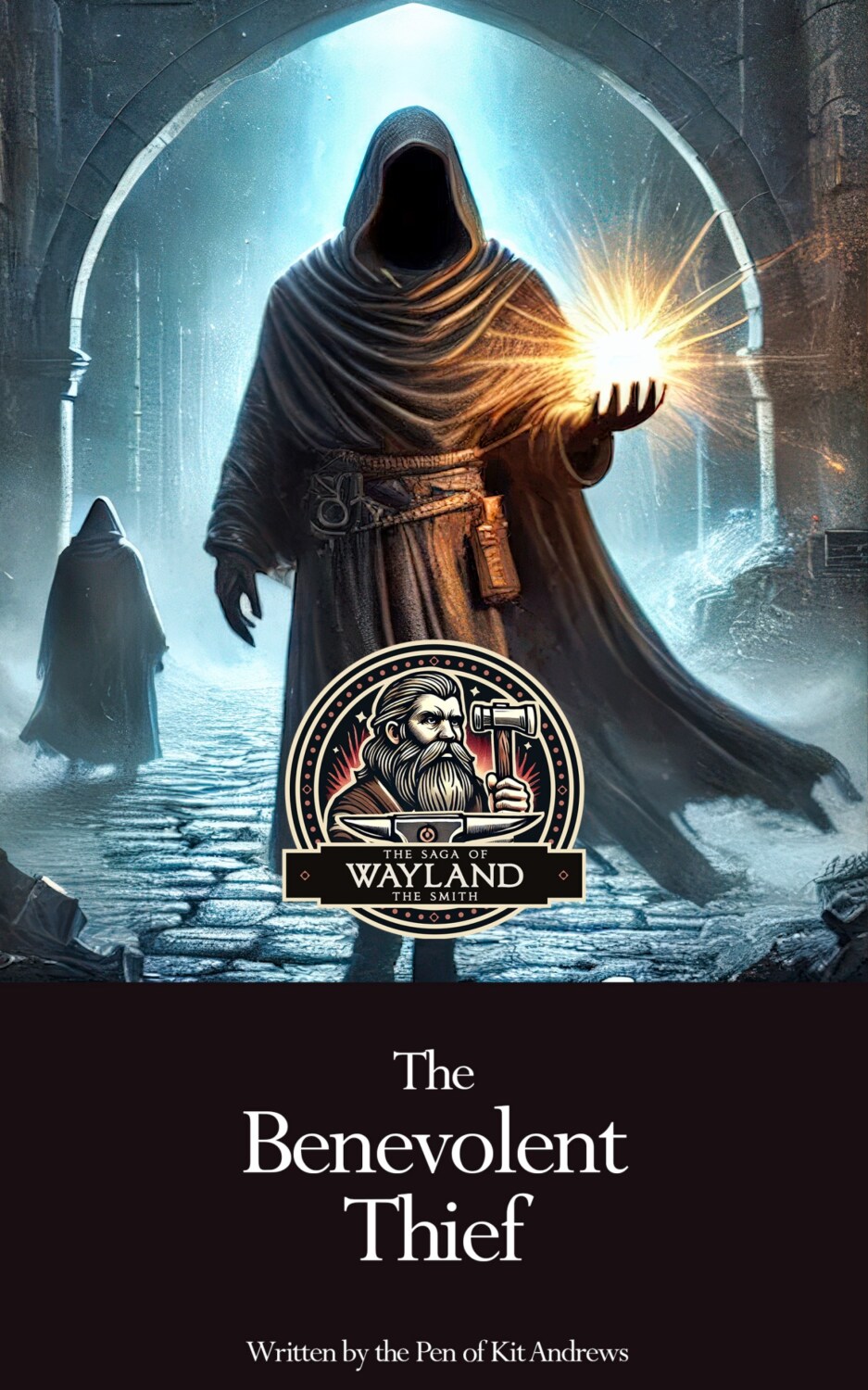Wayland the Smith
Wayland the Smith is a mythological figure whose roots stretch deep into the ancient cultures of Northern Europe.

WELCOME
Wayland the Smith
Wayland the Smith is a mythological figure whose roots stretch deep into the ancient cultures of Northern Europe. Known in various forms as Wēland in Old English, Völundr in Old Norse, and Galannus in some early Celtic forms, he is depicted as an unmatched craftsman, often exiled or imprisoned, who creates wonders from fire and iron.
One of the most enduring stories comes from the Poetic Edda and Anglo-Saxon tradition: Wayland is captured and hamstrung by a jealous king who seeks to control his skill. In captivity, Wayland crafts deadly revenge – ultimately escaping by crafting wings of feathers and flying to freedom, leaving behind sorrow, loss, and legend.
Across the centuries, Wayland’s name has adorned places and stones, like Wayland’s Smithy in Oxfordshire – a Neolithic burial site later associated with the mythical smith. Travellers would leave coins or offerings there, hoping for help or a blessing from the unseen maker.
Kit Andrews’ stories take that old myth as a foundation, and then explore what it means to live with such a legend in your bones. The Wayland of the books is scarred, proud, and haunted – a man shaped by fire, loss, and iron, searching for meaning in a world that both reveres and fears him.
THE MAN HIMSELF
Who Was Wayland the Smith?
Wayland the Smith is one of the most enduring and enigmatic figures in Northern European mythology. A master of metal and mystery, his story is woven into the earliest layers of Norse, Germanic, and Anglo-Saxon lore – appearing in fragments across centuries of poetry, myth, and archaeological symbolism.
Known variously as Wēland (Old English), Völundr (Old Norse), and Wieland (Old High German), Wayland’s legend spans cultures and kingdoms. He is the archetypal smith – a solitary figure who creates weapons and wonders, often exiled, wounded, or betrayed. Much like Hephaestus in Greek mythology or Ilmarinen in Finnish lore, Wayland is a divine craftsman, but his story is darker, more tragic, and more human.
In the Old Norse Poetic Edda, his tale is told in Völundarkviða (The Lay of Völundr). There, he is captured by King Níðuðr, hamstrung to prevent his escape, and forced to forge treasures for his captor. But Wayland’s vengeance is terrible: he kills the king’s sons, fashions goblets from their skulls, and escapes on wings he forges himself – a proto-Icarus borne not of ambition, but vengeance and survival.
In Anglo-Saxon England, his name appears in the elegiac poem Deor, where he is invoked as a symbol of suffering endured and overcome. His image was also carved into the stone friezes of the Franks Casket, an early 8th-century whalebone chest that places his story alongside Biblical and Roman scenes – suggesting his myth was already deeply rooted in the cultural imagination of early medieval England.
Perhaps the most famous physical landmark is Wayland’s Smithy, a Neolithic long barrow near the Uffington White Horse in Oxfordshire. Though it predates the legend by millennia, folklore has long claimed it to be Wayland’s workshop. For centuries, travellers believed that if you left a coin there overnight, a horseshoe or blade would be mended by morning – proof of the silent smith still at work beneath the hill.
Wayland is not merely a character from myth. He is a cultural echo of a deeper truth – the solitary maker, the wounded exile, the genius in the shadows. His legend was never polished into sainthood or sanitised for fable. It remained raw, elemental, and forged in fire.

THE AUTHOR
Kit Andrews
Kit Andrews is an avid historian, writer, and local folklore enthusiast, with a particular passion for the ancient landscapes and legends of Britain. Drawing on years of research, personal experiences, and a deep love for the mysteries of the past, Kit crafts tales that blend the known with the unknown, inviting readers to journey through time and explore forgotten histories.
With a talent for weaving rich narratives, Andrews brings to life stories like Wayland’s Tale, where mythology, history, and the enchanting countryside collide. Inspired by ancient landmarks, local legends, and historical mysteries, Kit Andrews offers readers a fresh and thought-provoking perspective on the world of the ancients.

BLOG
Latest News
-
Wayland Early Years
THE STONE CIRCLE OF LIFE Wayland welcomed the stone he found to rest against for the night, far better than the damp ground he had suffered with many days and nights afoot. As the dark dark night gave way to the first twinkling of day break, he gave a gruntled morn to the rising sun …
More -
The White Horse
Letcombe Mill Stream . There is a myth around the White horse, that with the imminence of war, the Mill stream in Letcombe Regis ( I believe) would boil as though a hundred horses were pounding the waters like it was boiling, a prelude to a war. The myth is, that this is the White …
More -
The Many Names of Wayland the Smith
Wayland the Smith is a figure deeply rooted in the mythological and folkloric traditions of Northern Europe, revered and feared as a master blacksmith with near-supernatural powers. While most know him today as Wayland the Smith, his legend has travelled across centuries and borders, adopting many different forms, names, and interpretations along the way. From …
More





